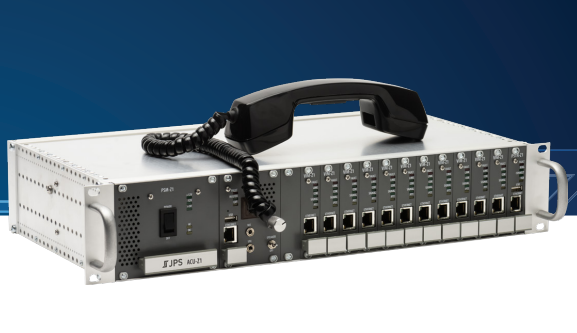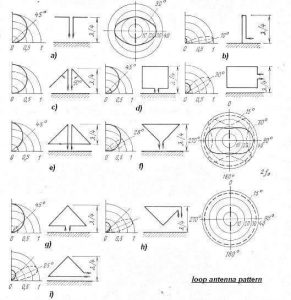ACU-Z1: A Modular, IP-Centric Interoperability Gateway Built for Modern Communications
In operational environments where reliable communication is critical — such as public safety, defense, emergency response, utilities, and industrial networks — agencies often rely on a mixture of legacy radio systems, telephony, dispatch consoles, smartphones, and Push-to-Talk over Cellular (PoC) platforms.
However, these systems do not inherently understand each other. Without a unified interoperability gateway, communication breaks down, slowing response time and degrading situational awareness.
The ACU-Z1 was developed to solve this problem. As a modular, fully IP-centric interoperability gateway, it enables seamless communication across different radio networks, telephony systems, IP platforms, and wireless devices — regardless of brand, operating band, or underlying infrastructure.
Built on 30 Years of Interoperability Expertise
The ACU-Z1 carries forward nearly three decades of JPS’ leadership in communications interoperability solutions. Unlike traditional fixed hardware patching systems, the ACU-Z1 is designed with a flexible resource architecture that supports both hardware and virtual (IP) communication interfaces.
It combines:
- Scalable hardware modules for radio and telephony connections
- Virtual IP-based communication channels
- Native PoC and RoIP integration capabilities
- A modern, network-oriented control engine
This makes it suitable not only for standalone interoperability operations, but also as a central controller in wide-area, multi-site communication environments.
Modular Architecture for Maximum Flexibility
The ACU-Z1 is built around a modular card-based design:
| Module / Card | Purpose |
|---|---|
| VIM-Z1 | Supports radio, 4-wire, and IP resource configurations (2 resources per card). |
| PSTN-Z1 | Provides telephony and IP resource integration (2 resources per card). |
| CPM-Z1 | Manages up to 24 remote IP resources and system-level coordination. |
This modular approach allows the system to be tailored to mission needs, expanded over time, and integrated with existing infrastructure without forcing equipment upgrades.
Network-Centric Interoperability
The ACU-Z1 embraces an IP-first design philosophy. It can seamlessly integrate other JPS devices such as:
- RSP-Z2 gateways
- NXU-2B RoIP interfaces
- Other ACU-Z1 units in remote locations
These connections occur over IP, meaning:
- No additional radio ports are consumed
- No special wiring is required
- Deployment over existing networks is straightforward
This ensures reliable communication even across geographically distributed operational areas.
Dispatch and Monitor: Dual Operational Zones
A key advantage of the ACU-Z1 is its ability to support both dispatch and monitoring workflows directly through its web-based user interface:
Dispatch Mode
- Any configured resource can act as a dispatcher
- Supports two-way communication control
- Enables quick, on-the-fly net formation
Monitor Mode
- Any resource can be configured as a monitoring listener
- Enables passive situational awareness without affecting traffic
- Useful for command centers, supervisors, training, and status auditing
This separation of roles increases operational clarity and reduces channel congestion.
Native Push-to-Talk over Cellular (PoC) Integration
Unlike many gateways that require external devices or proprietary middleware, the ACU-Z1 provides native PoC connectivity at the card level.
This allows seamless bridging between traditional radio systems and cellular-based talkgroups — a key advantage for:
- Rapid deployment teams
- Cross-agency cooperation
- Remote field personnel using smartphones instead of radios
Advanced System Features
The ACU-Z1 includes several advanced capabilities that improve operational reliability and audio quality:
- Patented Adaptive Transmit Delay — Optimized trunked radio performance without clipping.
- Resource-specific audio tuning — Ensures high clarity across mismatched system types.
- Dedicated recording streams — Fully compatible with third-party logging recorders.
- AES-256 and ChaCha20 encryption (optional) — Supports secure encrypted communications.
Scalable, Browser-Based User Interface
The ACU-Z1 does not require dedicated operator consoles.
Users can access the full system from any web-enabled device, including:
- Command center workstations
- Laptops
- Tablets
- Smartphones
The UI supports:
- Multi-user light dispatch
- On-screen audio listening
- Drag-and-drop net management
- Flexible layout personalization for each operator
This reduces training time and supports decentralized or remote operation.
Deployment Use Cases
The ACU-Z1 is ideal for mission-critical environments such as:
- Emergency Operations Centers (EOC)
- Joint public safety & defense task forces
- Industrial or utility network control rooms
- Municipal, statewide, or national communication systems
- Rapid disaster response deployments
Technical Specifications (Summary)
| Parameter | Value |
|---|---|
| Size & Weight | 3.5” H × 19” W × 10” D; ~11 lbs |
| Power | 115/230 VAC or 11–15 VDC input options |
| Vocoders | GSM, G.711 μ-Law / a-Law |
| Card Inputs | Balanced/unbalanced audio interfaces |
| System Software | SW V4.8 |
Conclusion
The ACU-Z1 is a robust, modern interoperability gateway purpose-built for environments where communication reliability and coordination are critical. With its modular hardware, native IP resource handling, PoC integration, and scalable dispatch/monitor interface, it enables organizations to unify diverse communication platforms into one seamless operational network — without forcing system replacements or complicated integrations.
It is a proven, future-ready solution for interoperable communications at any scale.







Post Comment